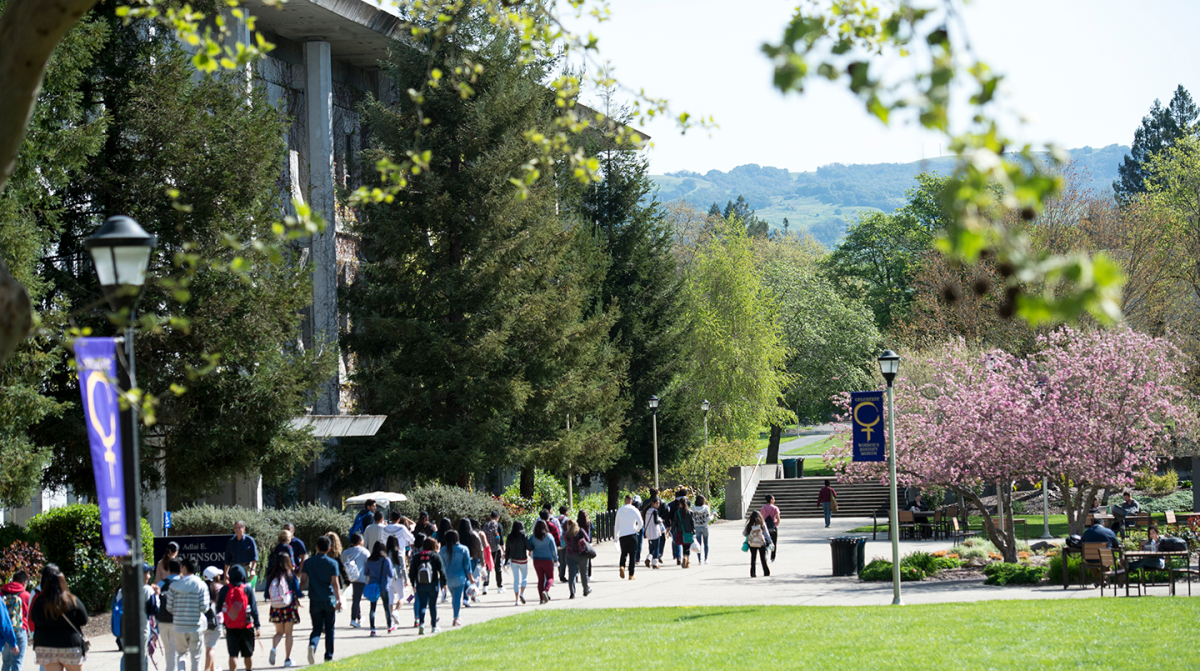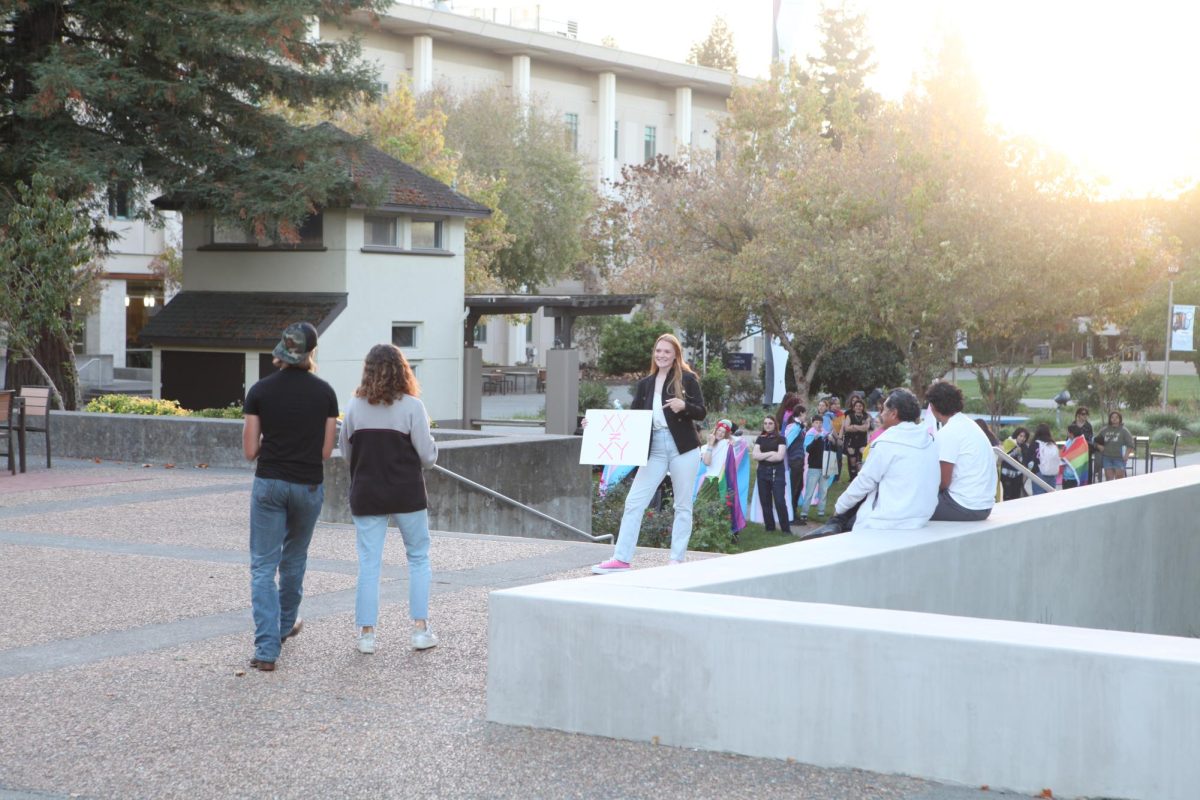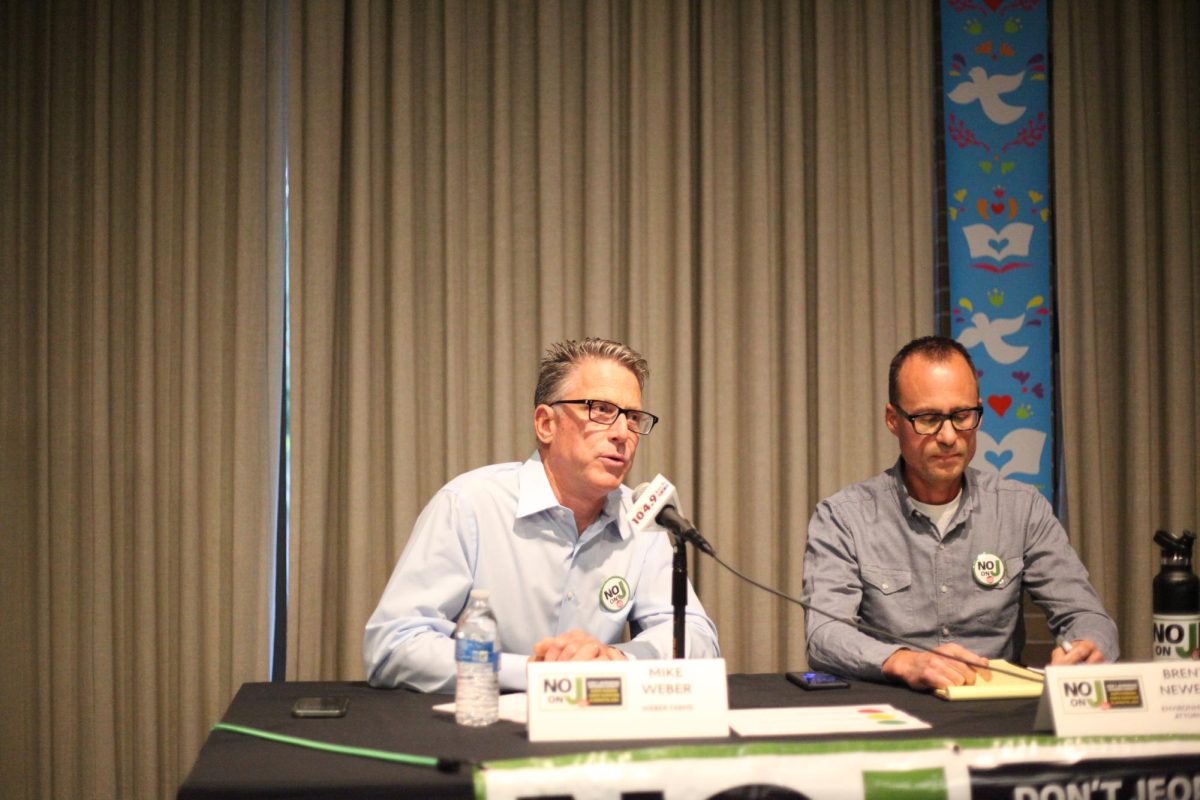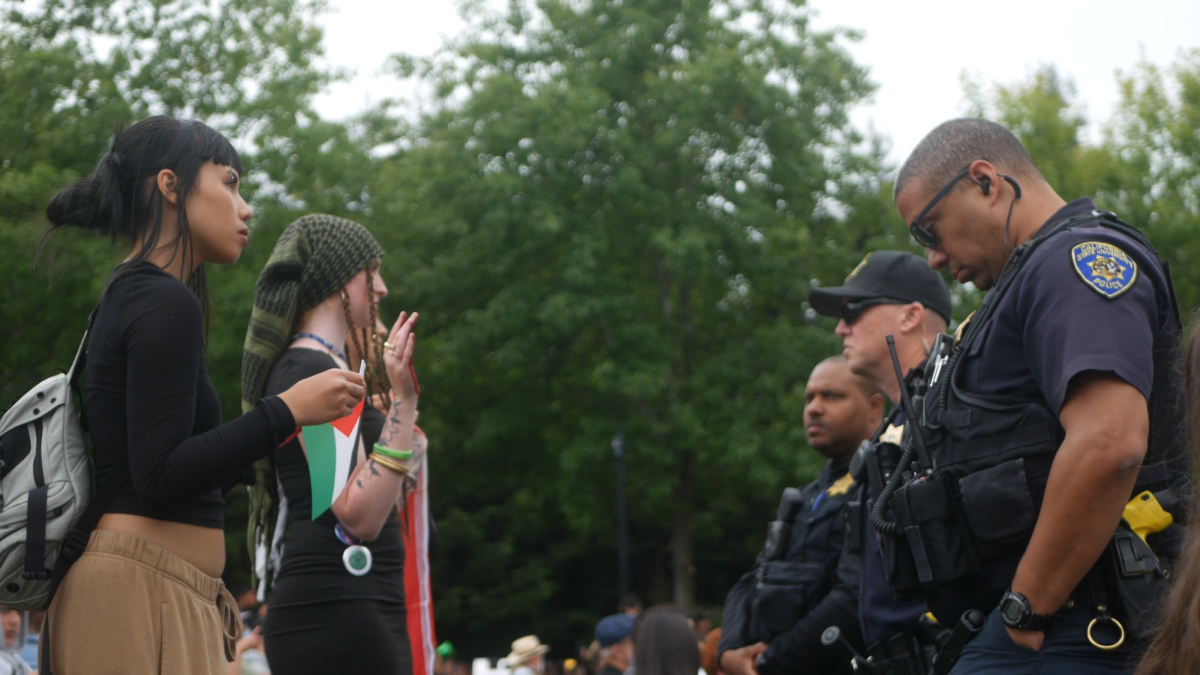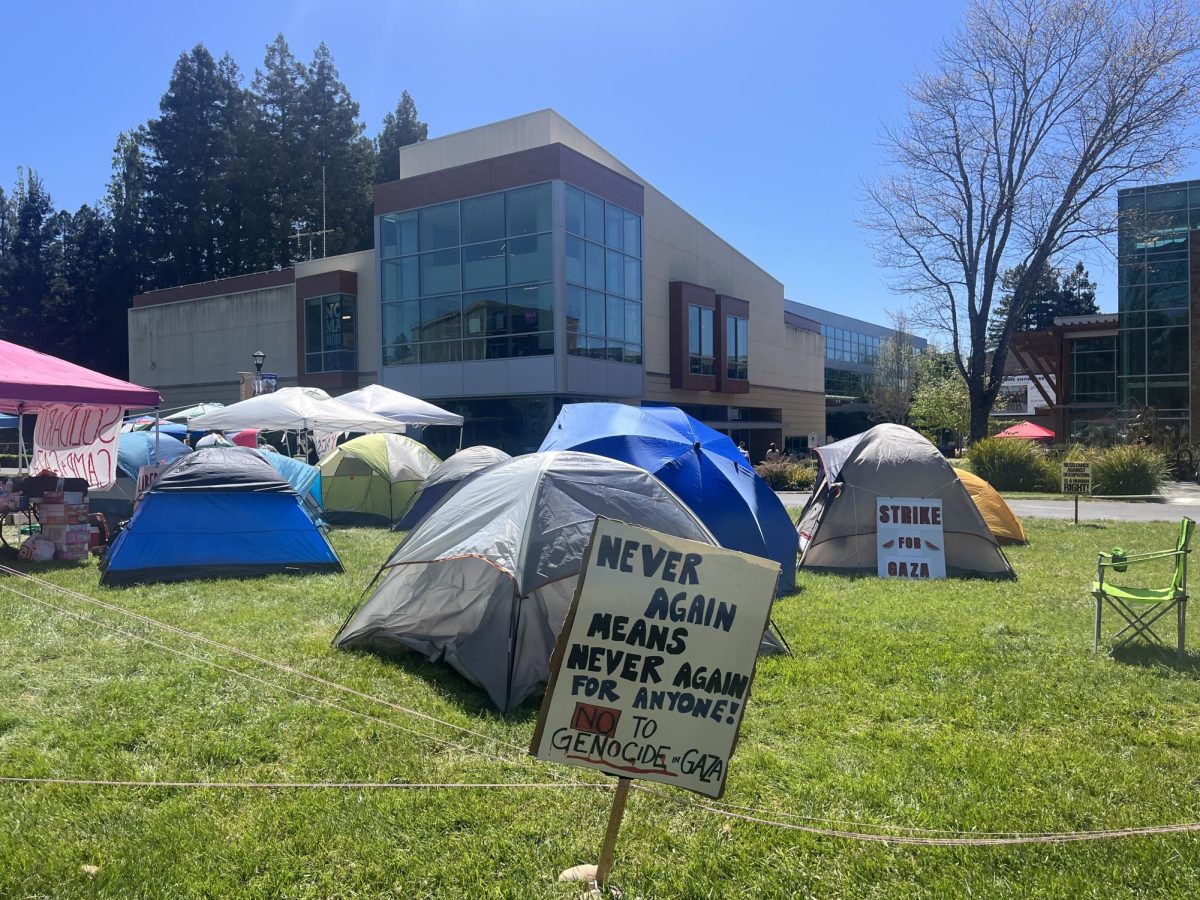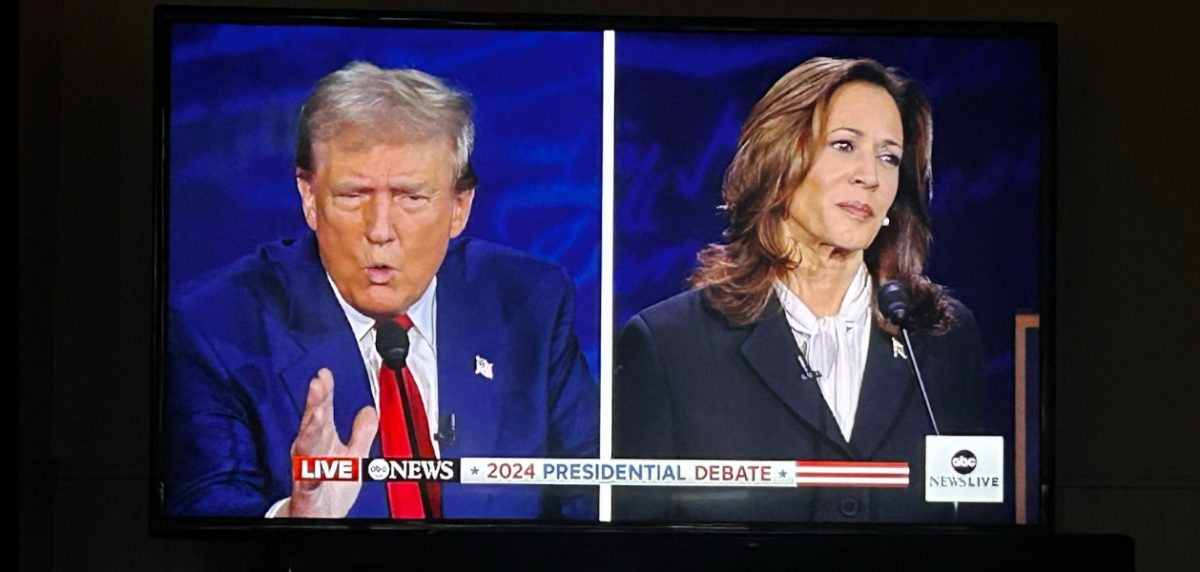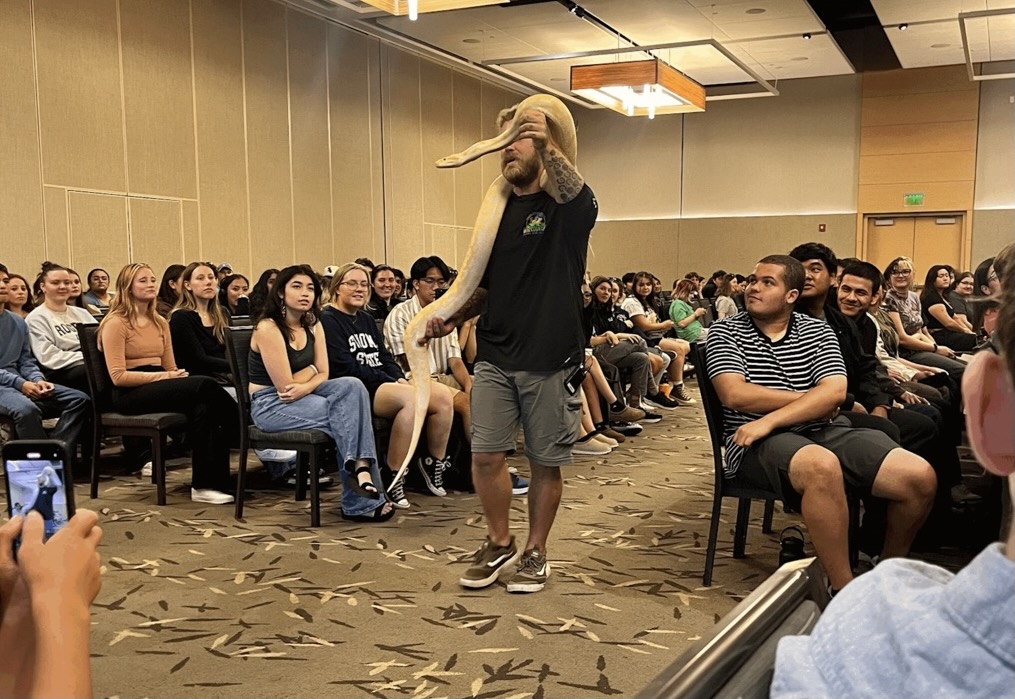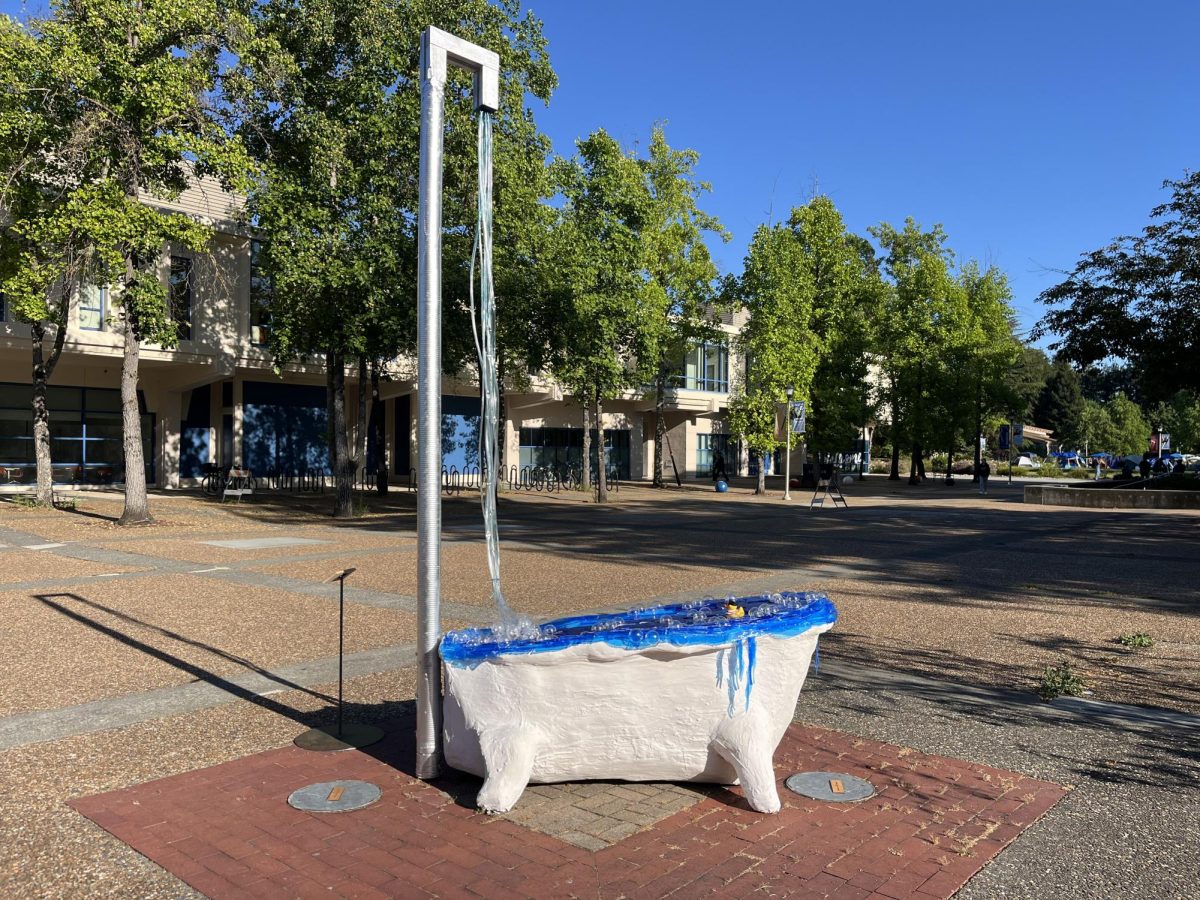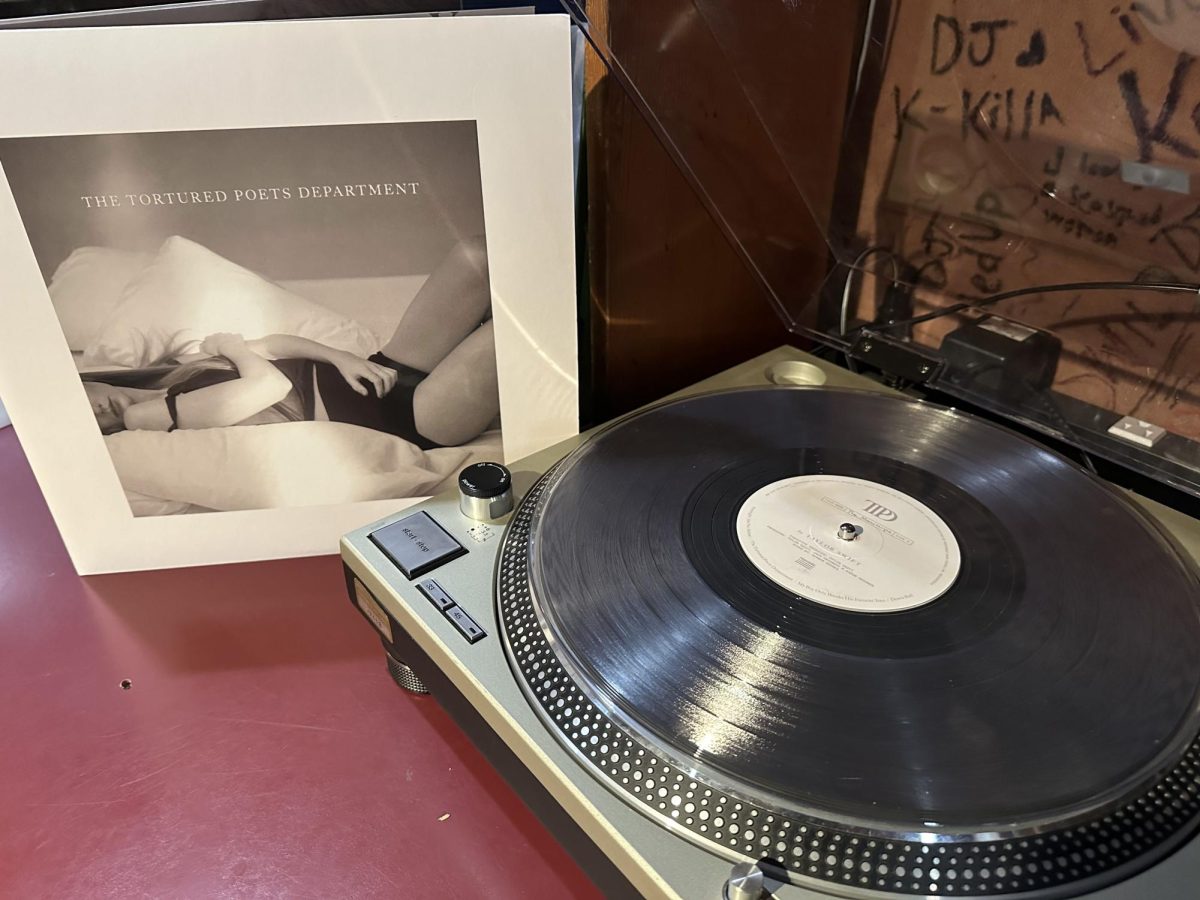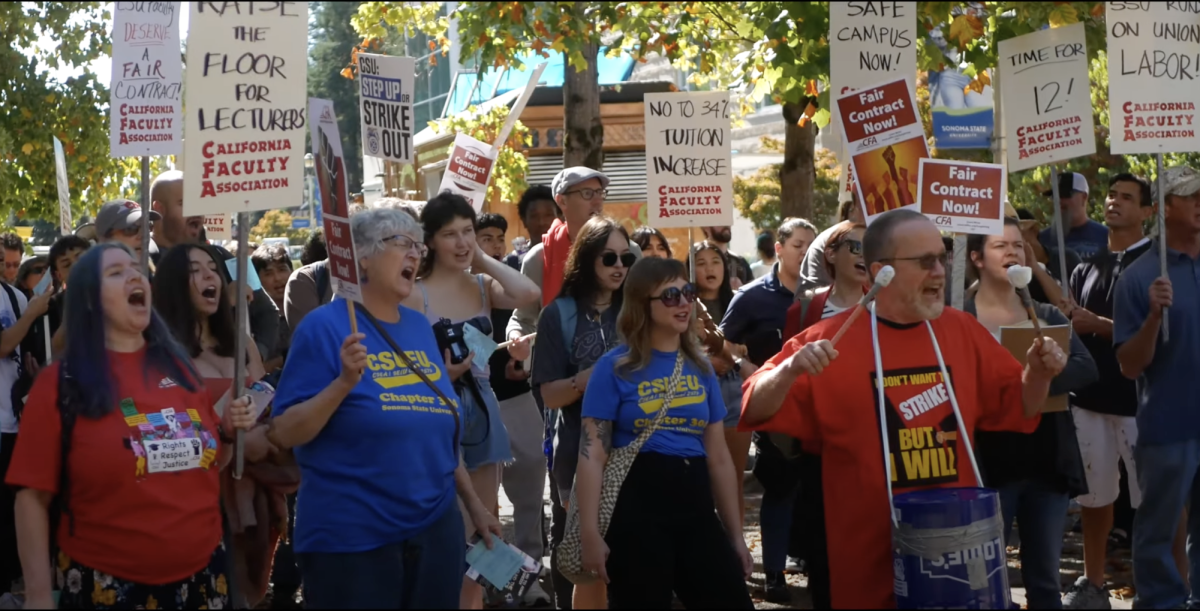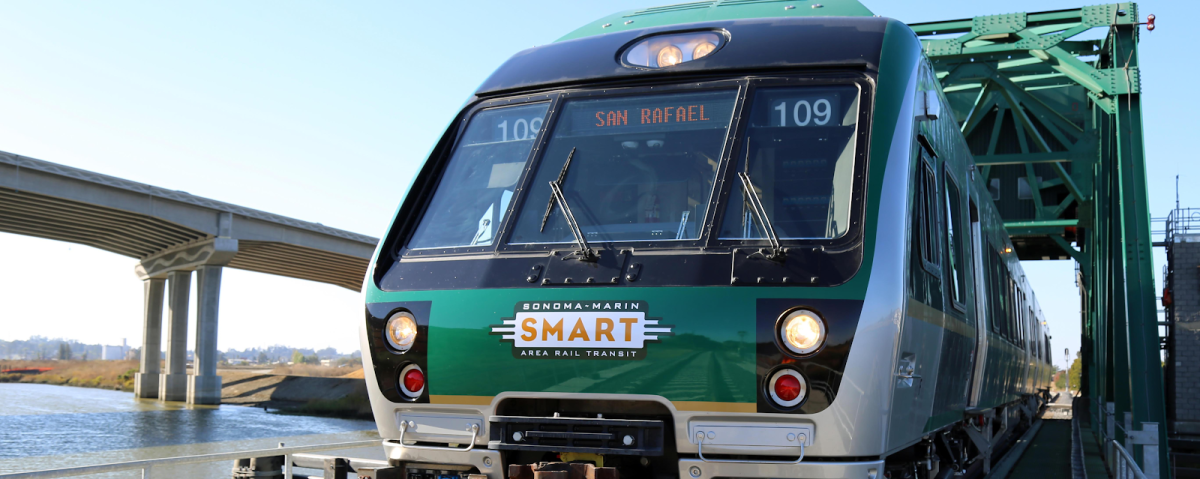It’s a bustling afternoon as the SMART train pulls out of the San Rafael station headed towards Santa Rosa. A group of exuberant high school-aged boys squeals with laughter as they pile together for a group Snapchat; a young woman in a purple beanie takes a break from clicking away diligently on her sticker-laden laptop to take a sip from her Hydro Flask; two elderly couples chuckle and shake their heads upon learning that some riders are paying for their tickets on a mobile app rather than carrying physical copies.
At a railroad crossing in Novato, a little girl beams ear to ear as she hops up and down, waving furiously at train riders with one hand, her mother’s hand clasped firmly around the other. As the train rolls into Sonoma County the landscape opens up, and a few riders point out a small herd of deer grazing on an adjacent hillside.
The group of riders on this sunny, pleasant Friday may have been oblivious to any controversy, but Measure I, an initiative to extend taxes funding the Sonoma-Marin SMART train until 2059, has some voters truly “off the rails” with passion.
Molly Flater, Chief Officer of Gallaher Homes, a multi-million dollar Sonoma County developing company, founded by her father, is particularly outspoken about the measure. Flater has donated over $1 million to the anti-SMART campaign.
“Measure I allows SMART to spend billions more in tax revenue without any budget oversight nor any commitment to extend the line or improve service,” Flater claimed in an open letter published by notsosmart.org, the source of most recent anti-SMART advertising. The tax revenue Flater speaks of will come from a quarter of one-cent sales tax which has already been in place since 2008. Measure I extends the tax, but will not increase it.
Flater calls the SMART train a “financial disaster” and argues, among other things, that the small percentage of the population that currently rides the train regularly cannot justify taxing the public. She cites past delays in SMART’s development, emphasizing that SMART has only completed 45 miles of its 71-mile route proposed in 2008, calling it “one of the worst-performing trains in the country”.
In rebuttal, the pro-SMART campaign blames the unexpected 2009 recession for this delay, stating that projected revenue was cut by $100 million during this financially difficult time. SMART does hope to complete its proposed route with the funding it would receive from the proposed tax extension, and significantly increase ridership as a result. So far the SMART train has served over 1.6 million passengers, including 5,700 who require wheelchair access, and the organization hopes to expand these numbers.
The pro-SMART campaign, which uses the slogan “Stay Green, Keep SMART,’’ criticizes the financial involvement of Molly Flater and Gallaher Homes.
“I think the public needs to ask themselves why it is that one multi-million family is putting all of this money into this campaign to influence this election and take away transit options for working individuals, and disabled persons,” said SMART board chairman Eric Lucan in a statement. Despite opposition, the pro-SMART lobby managed to keep up with fundraising efforts, receiving over a dozen donations of $1,000 or more while racking in a total of over $1,100,000, and the amount continues to grow.
A few primary Measure I supporters include the North Bay Labor Council, the Federated Indians of Graton Rancheria, Sonoma County Superintendent of Schools Steven Herrington, and the organization Friends of SMART.
In a summary of their reasons for backing Measure I, these supporters stated that the SMART train was intended to reduce greenhouse gas emissions by making public transit widely accessible and decreasing the overwhelming traffic on highway 101 during peak hours, in addition to constructing a number of bike paths connecting stations. “Measure I is critical to SMART’s future,” the group of supporters wrote.
In a time when greenhouse gas emissions are increasingly seen as a serious issue, many environmentalists are advocating for nationwide improvement to public transportation.
In particular, the Graton Rancheria tribe, which regularly funds a number of philanthropic causes, including having donated to Sonoma State University, has contributed $1 million in favor of Measure I.
“If somebody wants to fight us, tell them to take their best shot,” said Greg Sarris, chairman of the Federated Indians of Graton Rancheria, in a late January interview with the Press Democrat. “We want the SMART train folks to have the opportunity to correct the misinformation that is going around and being put out by the naysayers’ campaign. Their folks have thrown in $500,000 or whatever it is, so we wanted not just to counter it, but we’ll double. We can do it and we will do it.”Since then, both campaigns have raised additional funding but continue neck-in-neck in the political race.
The vote for Measure I will take place on March 3, 2020.


